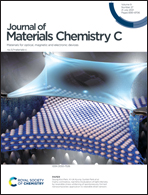Recent progress in artificial synaptic devices: materials, processing and applications
Abstract
Artificial synapses are memristor-based devices mimicking biological synapses, and they are used in neuromorphic computing systems that process information in a parallel, energy efficient way and store information in an analog, non-volatile form. The next generation of computing systems are anticipated to use memristive circuits, as they can overcome the shortcomings of the von Neumann computer architecture in which the levels of memory and the CPU are separated, creating a bottleneck that causes energy-loss during information transfer. Memristors are utilized to build Resistive Random Access Memory (RRAM) that allows for multi-level data storage and construction of self-correcting, autonomous learning systems that can solve complex computational tasks that have historically required super-computing hardware. Artificial synapses have received attention since HP Labs fabricated the first practical memristor device. In this review we summarize the working principles, device architectures, fabrication and processing techniques, as well as the strategies for materials selection including binary metal oxide, perovskite, polymer, and organic materials. We also discuss the applications and challenges of using artificial synapses in artificial intelligence tasks such as image recognition, tactile sensing and speech recognition.

- This article is part of the themed collection: Journal of Materials Chemistry C Recent Review Articles


 Please wait while we load your content...
Please wait while we load your content...